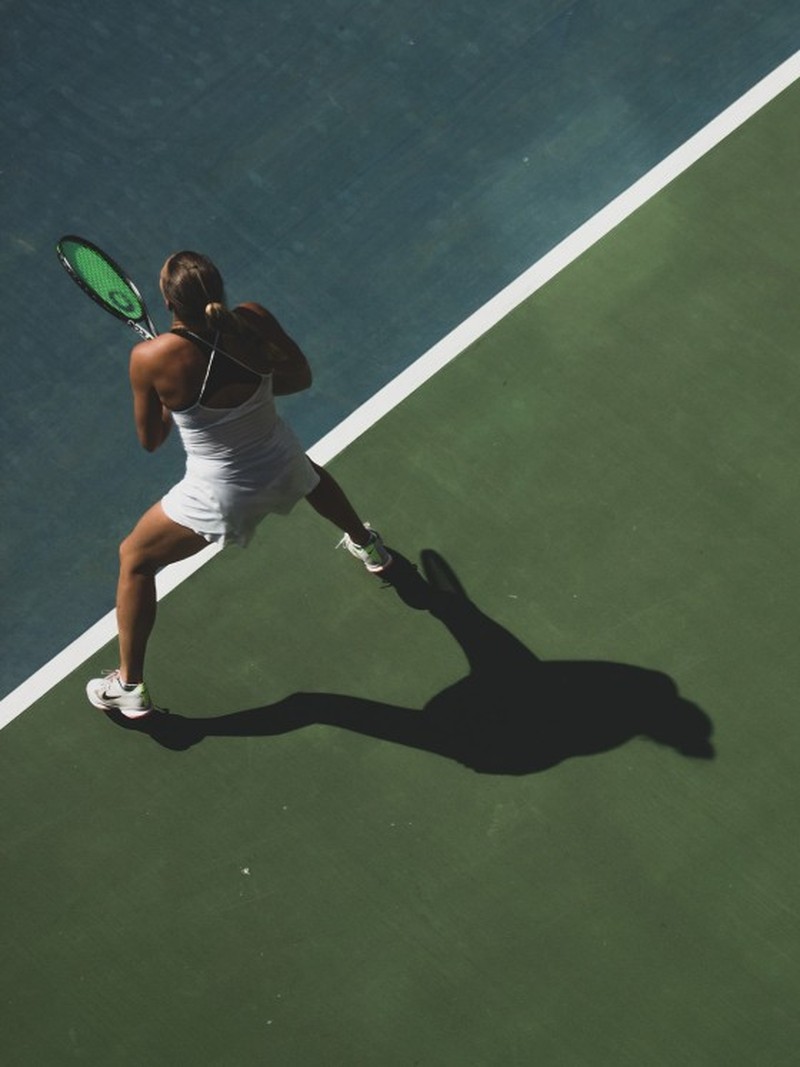How To Improve Your Tennis Technique
Work On Your Stamina
“Tennis fitness is all about high-powered bursts of aerobic exercise. Rowing – either on water or on a machine – is fantastic for building up your overall stamina to easily carry you through a few hours of play. Running is also great, particularly incorporated with interval training so you can get used to the pace of sprinting then slowing down. A lot of the power of your shot comes up through your stance on the ground, so it’s important your knees are strong so you can get low. Knee dips and lunges are a great way to work on them. Yoga and swimming are fantastic for overall conditioning as they elongate muscles as opposed to bulking ,which can sometimes result in a limited range of movement on court.” – Laura Ward, founder of Exeat Weekend
“Interval running is a good idea, as is the Versaclimber machine which is a real killer. Strength training is also important. Look for exercises that target the key muscle groups like dead lifts, split squats, hip thrusts, bench presses and bicep curls.” – Harriet Dart, professional tennis player
Perfect Your Serve
“The serve is often regarded as the most important shot in tennis since it marks the start of every point and can dictate how well the point goes. However, it’s also one of the most difficult shots to execute, mainly due to the high level of co-ordination required. Go continental and keep your serve simple to start. If you’re a beginner, hold the racket in a neutral or continental grip – like a hammer. Even if you are not a beginner, take the time to learn to hit a serve like this. This is the foundation that will take your serve to new heights. Think about your stance – your feet should always be shoulder-width apart with your front foot just behind the baseline and your front hip pointing to the net.” – Patrick Mouratoglou, professional tennis coach
“The ball toss is the most fundamental aspect of your serve: it needs to be high, slightly in front of you, and slightly to the right. Your racket action should be slow to fast, and you want to whip the ball with the head of the racket, then follow through as though you were taking a bow. I’ve spent many hours on court simply practising my toss and follow through because practice really does make perfect. I would study Roger Federer’s serve in slow motion. Go back and watch videos for a masterclass in serving. For beginners, I’d recommend some coaching to fine-tune your serve as it's so easy to get into bad habits. Remember, your serve should be your lethal weapon on court as it's the only shot you 100% control, so it's worth spending the time to get it right.” – Laura
Work On Your Footwork
“The key to footwork is to keep the legs pumping so you can react quickly. As the ball flies your way across the net, make lots of smaller steps on your approach, as opposed to running into it and then being too close to the ball to accurately take your shot. Footwork and position on court is everything in tennis.” – Laura
“Once you’ve reacted to your opponent’s shot, take a couple of larger steps. You want to cover as much ground as possible at this point. As you get closer to the ball, your steps should be smaller and more refined, which will help you find the appropriate distance to the ball for ideal body weight transfer. Think ‘big and small’ – initially big steps so you have more time to adjust, then small steps to dramatically increase your chance of finding a great position to strike the ball efficiently and effectively.” – Patrick
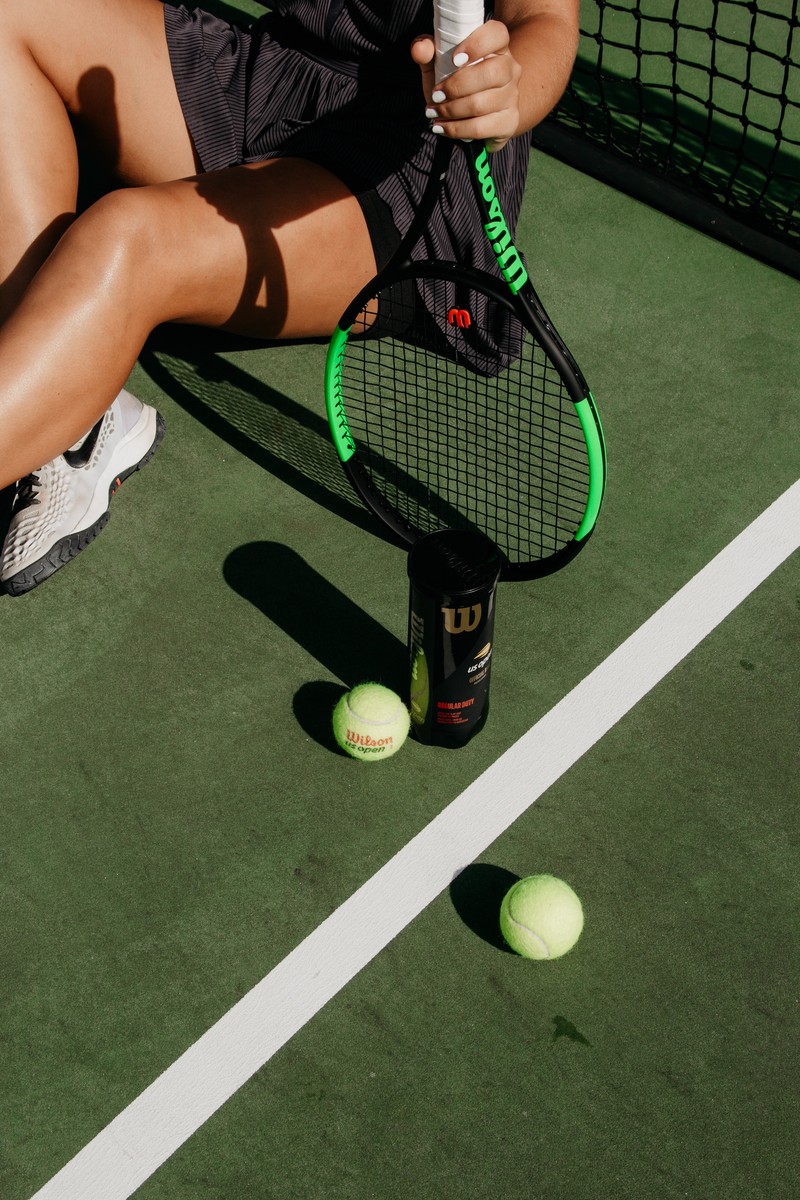
Get Comfortable With Volleys
“It’s important to recognise that a volley is different to a ground stroke. With a volley you are aggressively ‘blocking’ the ball and you shouldn’t swing your racket (as you would with a normal forehand/backhand). Instead, keep your wrist rigid and move your grip around to a chopper grip where the V of your hand is placed centrally on the handle. This helps stabilise the racket as you ‘punch’ the ball. As with every shot in tennis, it’s important the weight of your body is moving forwards as you hit. Once you get the feel for the volley, you can start bringing more shape to the shot, where you essentially slice through it with a spreading butter motion which turns up the spin. Then you can work on your double-handed backhand, which will immediately make your shot more reliable. The key is to keep your arms and wrist super relaxed and loose, and only tighten your grip just before you make contact with the ball.” – Laura
Stay Reactive
“If you’re serious about improving your game, it’s important to see things from a tactical perspective. Firstly, keep moving – it’s vital to stay on your toes. Never stand still, and always be conscious of your footwork. Secondly, perfect your ‘get ready’ move. As your opponent hits the ball, get into a ‘split step’. Stand with your feet at least shoulder width apart, with your hands out in front of you. This will put you in a prime position to prepare for your next shot. Finally, make sure you get your racket back early in preparation for your shot – this is important to ensure you’re ready to hit the ball in front of you, not behind, which will offset you on your feet.” – Harriet
Think Quality Over Quantity
“One focused hour of training is far more efficient – and effective – than three unfocused ones. Try to show up with a sense of purpose. This is important when you step on a court. Always have a clear goal before each training session and give it your best, however little time you have. Also, remember to not be too hard on yourself. One of the appealing things about tennis is that it isn’t easy. Sometimes we love this challenge, but tennis does not love you back. Don’t beat yourself up – stubborn perfectionism is the quickest road to frustration. The brain and body work best when they are relaxed.” – Patrick
Be Tactical
“Many people think the only way to attack an opponent is to go for their weaknesses. Instead, try to think outside the box. Start by switching up the attack time, which can be done by taking the ball earlier to rush the opponent and make them feel like they have less time. Some players feel more comfortable in certain sections on the court. Identify this, and try and get them to spend more time in the areas where they’re less comfortable. Few players feel comfortable close to the net, so force them in on your own terms. Also, make sure you are not playing the same ball all the time and unintentionally giving your opponent rhythm. Try to mix up your shots and see if your opponent gets frustrated.” – Patrick
Invest In The Right Equipment
“Avoid buying the cheapest racket available. Instead, focus on finding one that matches your body and grip size. Many shops offer demo rackets so you can try before committing. The type of strings on your racket is also something to think about. Top brands tend to sell rackets with a good string match. If you happen to break strings, make sure to replace them with good-quality strings. For beginner and intermediate levels, a soft string such as natural gut or multi-filament are great to hold tension and give you a nice, gentle feeling on impact.” – Patrick
“I always use my Yonex Vcore 100 racket. Other essentials I rate include long-sleeve sweat-wicking tops – Asics is my go-to brand for these – and hydrating drinks. I always have a bottle of Vitamin Well on the go with a couple of snacks like a Barebells Cookies & Cream protein bar.” – Harriet
Consider Getting A Coach
“If you’re regularly playing tennis, some level of coaching is essential. Tennis is a game of skill and it’s important to get the fundamentals right instead of getting into bad habits. Coaching is usually half the price of a PT and twice as fun. On a basic level, they can help you learn the rules of the sport and get to grips with the court and pace required to play a full match. When you’re ready to level up, they’ll fine tune each aspect of your technique and help you get to grips with tactics. Your local courts should have group coaching sessions available, which are even more purse friendly and a great way to make new tennis friends.” – Laura
FEELING INSPIRED?
SHOP THESE EXPERT APPROVED PRODUCTS


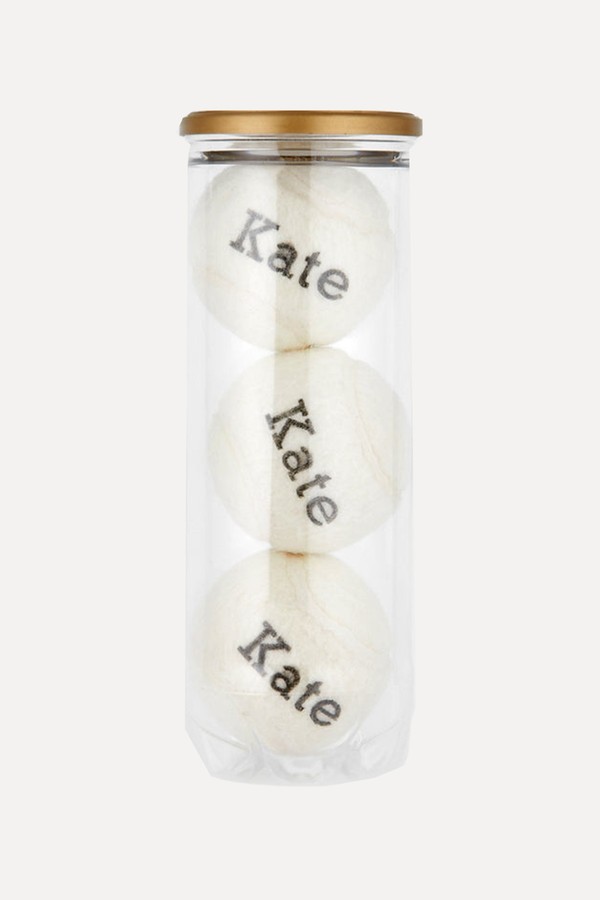
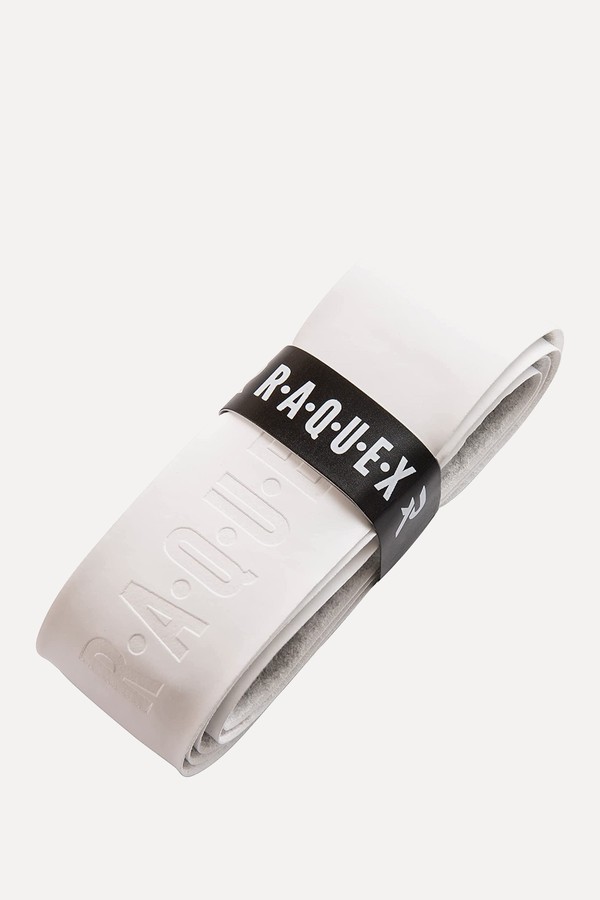
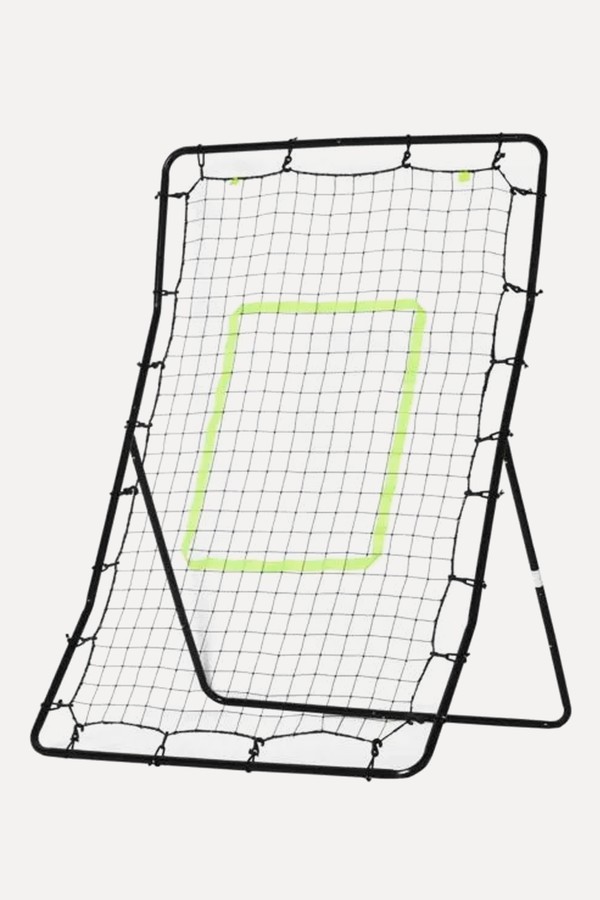
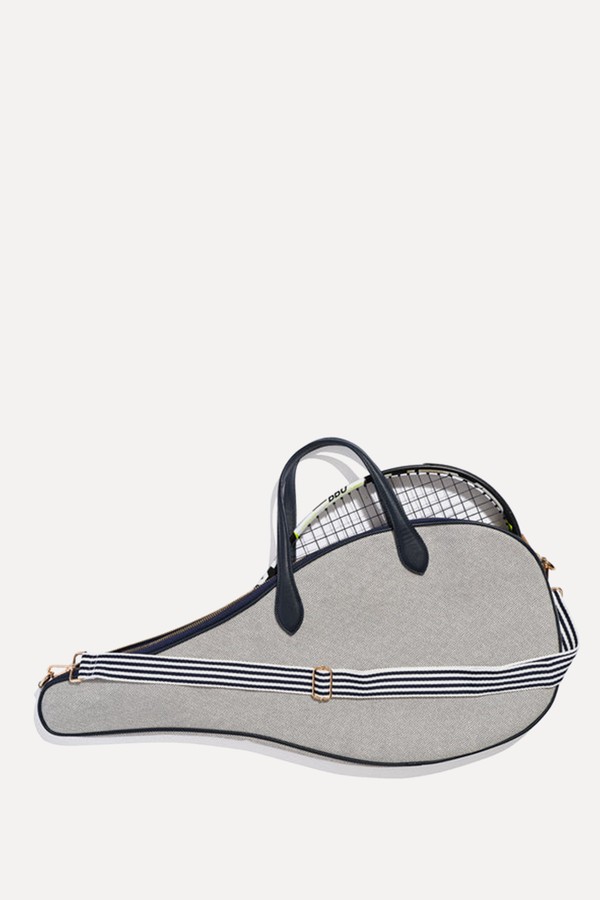
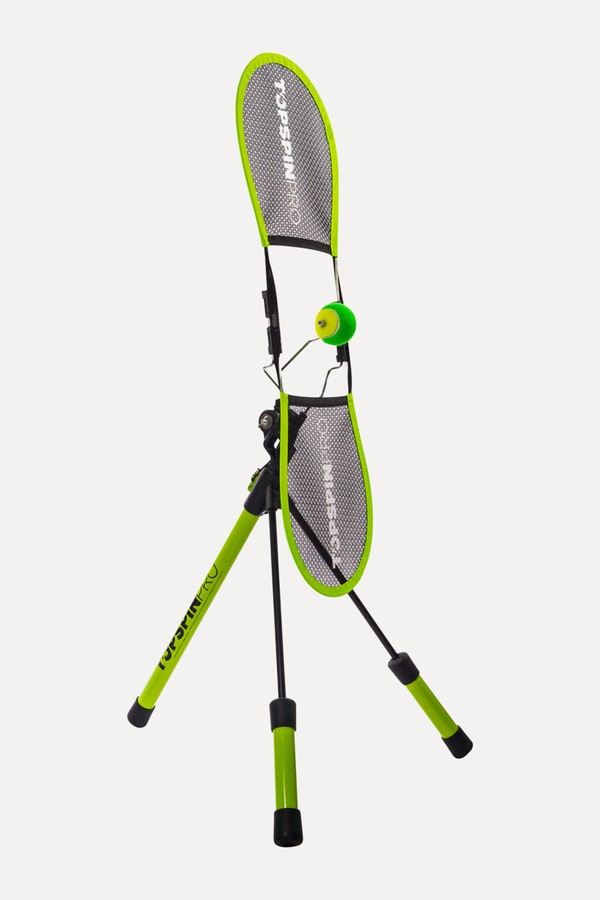

DISCLAIMER: We endeavour to always credit the correct original source of every image we use. If you think a credit may be incorrect, please contact us at info@sheerluxe.com.
